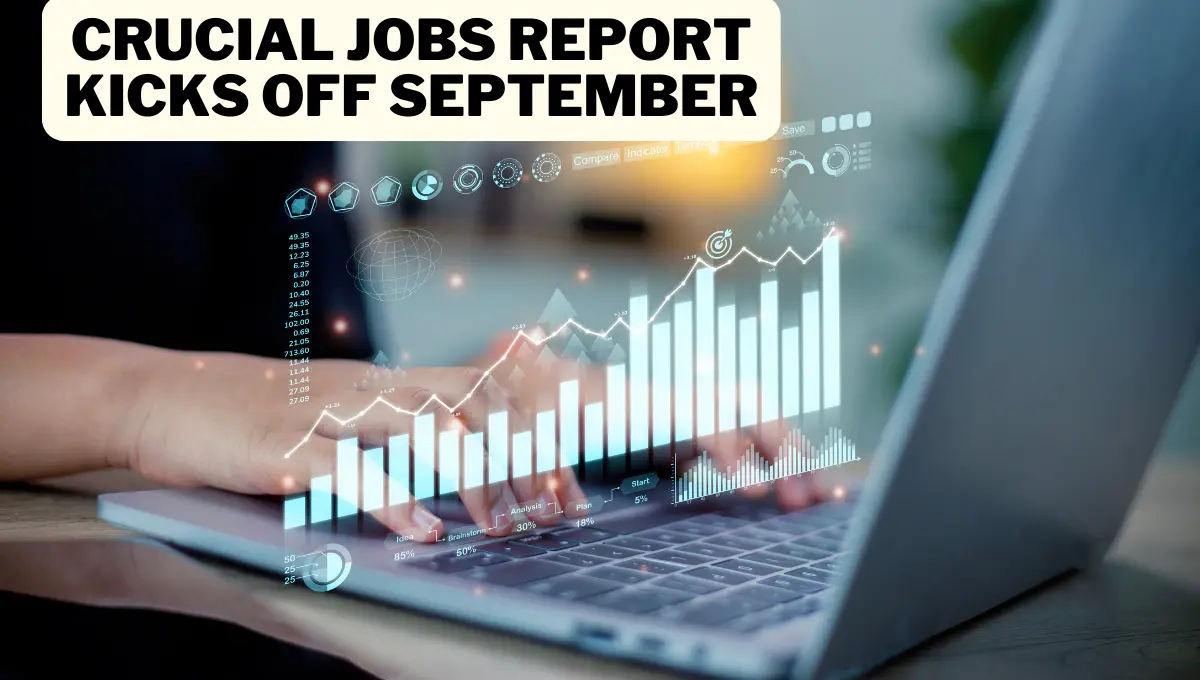As September begins, all eyes are on the U.S. labor market, with investors eagerly anticipating key data releases that could shape the economic outlook for the remainder of the year.
After a volatile August, which saw the S&P 500 (^GSPC) notch its fourth consecutive monthly gain, the focus now shifts to the August jobs report and other labor market indicators set to be released this week.
Volkswagen Could Close Plants In Germany For The First Time In History
August Market Recap: A Strong Finish to Summer
Despite market turbulence, the major indices closed August on a high note. The S&P 500 rose by nearly 2.3%, while the Dow Jones Industrial Average (^DJI) added around 1.8%, reaching an all-time high.
The Nasdaq Composite (^IXIC) also advanced, albeit more modestly, with a gain of over 0.6%. These gains marked a continuation of the market’s upward momentum, with investors balancing optimism over economic resilience against concerns about a potential slowdown.
Labor Day Pause and Upcoming Data Releases
With U.S. markets closed on Monday for Labor Day, attention now turns to the incoming labor market data. The headline event is the August jobs report, scheduled for release on Friday.
This report is particularly significant as it will provide insight into whether the slowdown observed in the July jobs report was a one-off event or a signal of a broader economic deceleration.
In addition to the jobs report, other critical data releases include updates on job openings, private sector wage growth, and activity in the services and manufacturing sectors.
These indicators will offer a more comprehensive view of the labor market’s health and its implications for the broader economy.
A Closer Look at the Labor Market
In July, the U.S. economy added only 114,000 jobs, falling short of expectations and pushing the unemployment rate to 4.3%, its highest level in nearly three years.
This unexpected weakness fueled fears of a recession, as concerns about a softening labor market intensified.
However, subsequent data suggested that the U.S. economy remained more resilient than initially feared.
Weekly unemployment claims, a key indicator used by economists to monitor the labor market between monthly reports, reversed their upward trend from July, indicating a possible stabilization.
Some economists, including Morgan Stanley’s Sam Coffin, believe that the July jobs report may have overstated the labor market’s weakness.
Coffin pointed to an unusually large increase in temporary layoffs, particularly in Texas, where Hurricane Beryl disrupted local labor markets.
As the effects of the hurricane subside, Coffin expects a rebound in the labor market, forecasting that the unemployment rate will drop to 4.2% in August, with 185,000 jobs added.
Fed Policy in Focus
The August jobs report will also play a crucial role in shaping expectations for the Federal Reserve’s next move.
The Fed’s preferred inflation gauge, released last Friday, showed continued progress toward the central bank’s 2% target, adding pressure on the upcoming labor report to guide the Fed’s decision-making process.
Nationwide senior economist Ben Ayers noted that while a 25-basis-point rate cut in September is widely expected following Fed Chair Jerome Powell’s Jackson Hole speech, the labor market’s performance could influence the size of the cut.
Ayers suggested that if the labor market shows significant deterioration, the Fed might consider a more aggressive 50-basis-point cut.
As of early Tuesday, market expectations were leaning towards a 25-basis-point cut, with a 31% chance of a 50-basis-point reduction, according to the CME FedWatch Tool.
Traders have priced in a full percentage point of rate cuts for the remainder of 2024, implying the possibility of a larger cut at one of the Fed’s three remaining meetings this year.
Shifting Market Leadership
Last week, Nvidia (NVDA) reported earnings that surpassed expectations once again. However, despite the strong results, the stock declined by 6% the following day, as investors appeared concerned about a slowdown in the company’s growth trajectory.
This pullback did not trigger a broader sell-off in the tech sector or the overall market, suggesting a shift in market dynamics.
For the past two years, the “Magnificent Seven” tech stocks—Apple (AAPL), Alphabet (GOOGL, GOOG), Microsoft (MSFT), Amazon (AMZN), Meta (META), Tesla (TSLA), and Nvidia—have led the market higher. However, recent trends indicate that other sectors are beginning to outperform these tech giants.
Bank of America’s head of U.S. equity strategy, Savita Subramanian, highlighted in a research note that since mid-July, over 70% of stocks have outperformed the S&P 500.
The equal-weighted S&P 500, which gives each stock in the index the same influence, has outperformed the traditional cap-weighted index.
From July 11 to August 29, the Magnificent Seven fell by a cumulative 10.2%, while the remaining 493 stocks in the S&P 500 gained 4.1%.
Kevin Gordon, senior investment strategist at Charles Schwab, pointed out that the Magnificent Seven have experienced their two worst months relative to the S&P 500 since December 2022.
This shift suggests that investors are increasingly looking beyond the tech sector for opportunities, potentially signaling a broader market rotation.
Conclusion: What to Watch This Week
As the first week of September unfolds, the focus will be squarely on the labor market and its implications for both the economy and Federal Reserve policy.
The August jobs report will be the key highlight, providing critical insights into the health of the U.S. economy.
Additionally, the shifting market leadership away from tech giants could mark the beginning of a new phase in market dynamics.
Investors should keep a close eye on the labor data and any signals from the Fed regarding future rate cuts. With so much at stake, this week’s developments could set the tone for the markets in the months ahead.
